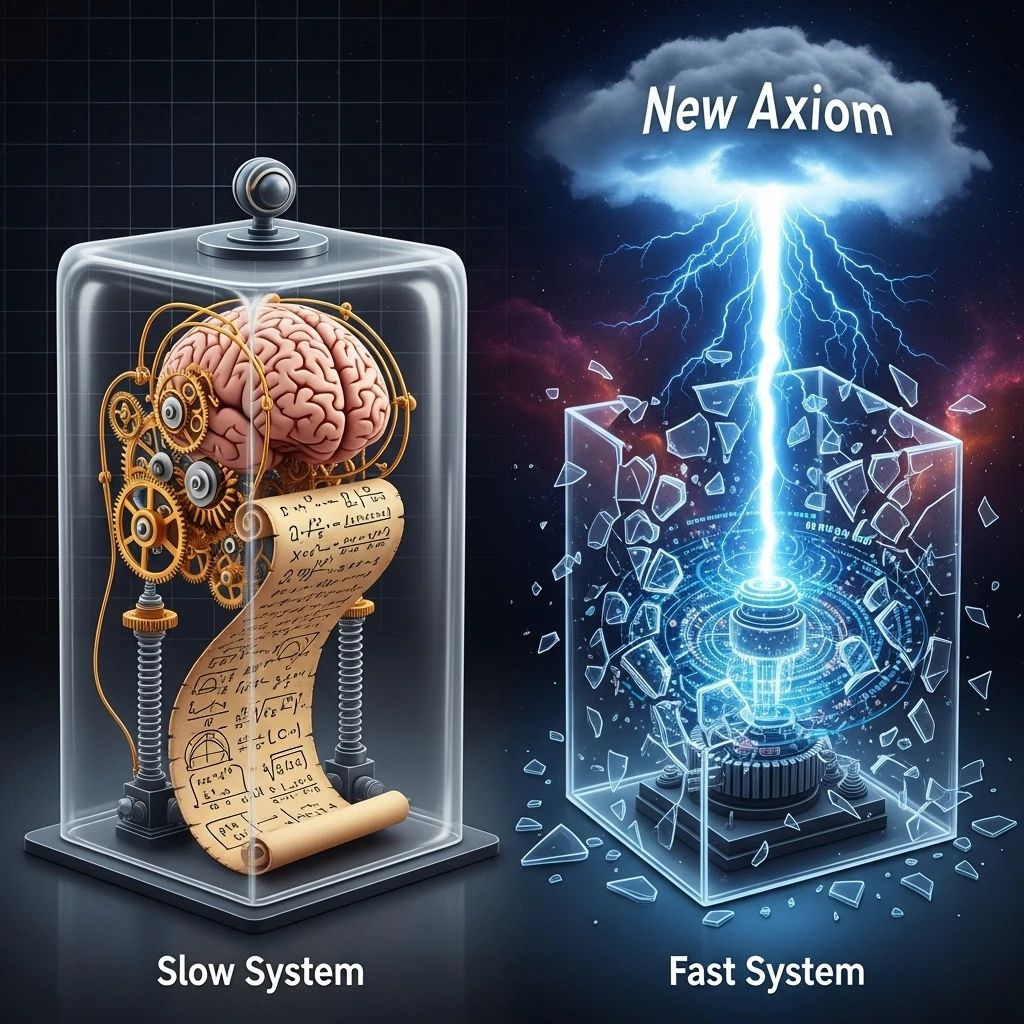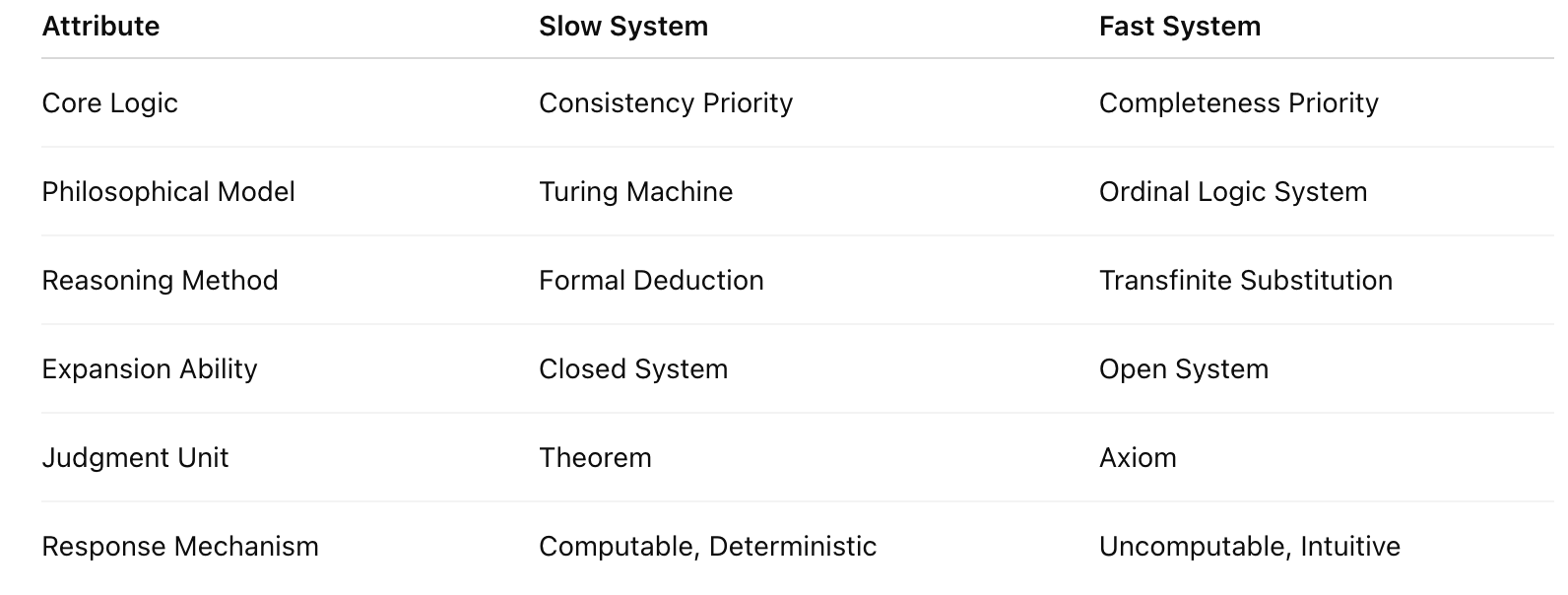
In the deep logic of blockchain design lies a fundamental yet often overlooked question: Is a consensus system the result of inference, or the product of judgment?
This question not only determines a system’s efficiency, security, and scalability—it also touches on a broader philosophical proposition:
This article, based on Gödel's Incompleteness Theorems, Turing Machines, and Ordinal Logic, reveals the computational philosophy behind various blockchain consensus mechanisms—and specifically analyzes why PoS systems (like Cardano, Avalanche) do not fall into the category of “fast systems”.
In 1931, Gödel proposed his Incompleteness Theorem, stating:
Gödel proved that: A sufficiently complex system cannot achieve both consistency and completeness simultaneously. As a kind of formal system, blockchain must also choose between the two.
Under this theorem, we divide all computational consensus systems into two major categories:

This classification also maps to psychology:
PoS consensus systems—represented by Cardano (ADA) and Avalanche (AVAX)—typically belong to the slow system. Here’s why:
1. Self-Referential Closure
The core rule of PoS is: “Token holders who stake participate in consensus.”
This rule is an internal axiom. All consensus activities occur within this rule, forming a closed loop that cannot incorporate external judgments.
2. Formal Deductiveness
Mechanisms like block production and validator ranking are based on computable, formal deduction rules—problems solvable by a Turing machine.
The system runs on theorem derivation, not on introducing new axioms.
3. No Jump Capability
PoS cannot perform transfinite iteration. It cannot introduce uncomputable new beliefs or judgments.
In other words, it lacks an “external oracle” to break through its current logical structure.
In contrast to slow systems, fast systems are mechanisms that upgrade structure via external judgment. They are based on the transfinite iteration idea proposed in Turing’s paper “Systems of Ordinal Logic”.
In blockchain, such judgment mechanisms are analogous to:
These simulate the “injection of external axioms,” breaking the system's internal closure.
We can use one core question to determine a system’s category: Is it deriving new theorems from known axioms, or is it continually introducing uncomputable new axioms?

Although Bitcoin operates within the realm of Turing-computability, its design partially simulates a fast system:
This implies Bitcoin may be the first proto-fast-system in computational structure.
We can summarize this division in a single sentence:
A slow system is the extension of the Turing machine, a reasoner for the known world;
A fast system is the leaper of ordinal logic, a constructor for the unknown world.
Understanding this helps us re-evaluate all consensus designs:
If not, it's a slow system, no matter how fast it runs.
If yes, it might step into the fast system, even if it moves slowly.